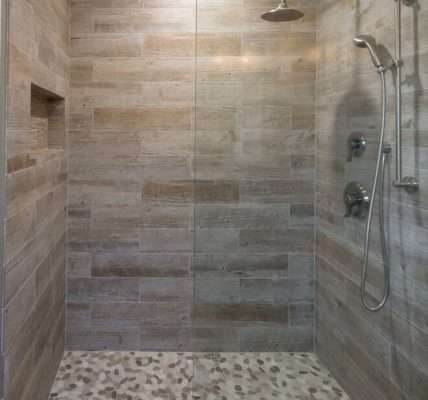Discovering a kitchen sink drain leak can be a frustrating experience, but don’t despair! It’s a common household problem that, with the right approach, you can often tackle yourself. This guide will walk you through the process of identifying the leak, gathering the necessary tools, and executing the repair, saving you money and the hassle of calling a plumber. Successfully repairing a kitchen sink drain leak requires careful observation and methodical steps.
Identifying the Culprit: Where’s the Leak Coming From?
Before you start tearing things apart, pinpointing the exact source of the leak is crucial. This will save you time and prevent unnecessary work.
- Run the water: Slowly fill the sink and watch for drips.
- Check the connections: Feel around the pipes and connections with a dry paper towel. Wetness indicates a leak. Pay close attention to:
- The drain flange (where the drain meets the sink basin)
- The pipe connections (where pipes screw together)
- The P-trap (the U-shaped pipe under the sink)
- The garbage disposal (if you have one)
Gathering Your Arsenal: Tools and Materials
Having the right tools and materials on hand will make the repair process much smoother. Here’s a list of essentials:
- Basin Wrench: For loosening stubborn nuts on the drain flange.
- Channel-Lock Pliers: For gripping and turning pipes and connections.
- Adjustable Wrench: For tightening nuts and bolts.
- Screwdrivers (Phillips and Flathead): For removing screws on the drain flange or garbage disposal.
- Plumber’s Putty: For sealing around the drain flange.
- Pipe Joint Compound (Teflon Paste): For sealing threaded pipe connections.
- Teflon Tape: Another option for sealing threaded pipe connections.
- Bucket or Basin: To catch any water that may drip during the repair.
- Rags or Towels: For cleaning up spills and drying surfaces.
- New Washers and Seals: Matching the size and type of your existing hardware.
The Repair Process: A Step-by-Step Guide
Once you’ve identified the leak and gathered your supplies, it’s time to get to work. Remember to turn off the water supply to the sink before you begin.
1. Disassemble the Leaky Connection: Carefully loosen and remove the connection where the leak is occurring. Use the appropriate wrench or pliers. Place a bucket underneath to catch any water.
2. Clean the Surfaces: Thoroughly clean all the surfaces that will be reconnected. Remove any old plumber’s putty, pipe joint compound, or Teflon tape.
3. Apply Sealant: Apply fresh plumber’s putty to the underside of the drain flange or apply pipe joint compound or Teflon tape to the threads of pipe connections.
4. Reassemble the Connection: Carefully reassemble the connection, ensuring that all parts are properly aligned and tightened. Avoid over-tightening, which can damage the pipes.
5. Test for Leaks: Turn the water supply back on and run the water to check for leaks. If you see any leaks, tighten the connection further or disassemble and reapply sealant.
This process may require patience. Finding the source of the leak can sometimes be a challenge. Take your time, follow the steps carefully, and don’t hesitate to consult online resources or a professional plumber if you get stuck.
Frequently Asked Questions (FAQ)
Q: What if I can’t find the leak?
A: Sometimes leaks are very small and difficult to spot. Dry all the pipes and connections thoroughly, then wrap paper towels around each connection. Run the water again and check the paper towels for wetness.
Q: What’s the difference between plumber’s putty and pipe joint compound?
A: Plumber’s putty is used to seal around drain flanges and other non-threaded connections. Pipe joint compound (or Teflon paste) is used to seal threaded pipe connections.
Q: How tight should I tighten the connections?
A: Tighten the connections snugly, but avoid over-tightening. Over-tightening can damage the pipes or connections.
Q: When should I call a plumber?
A: If you are uncomfortable working with plumbing, if you can’t find the leak, or if the leak is significant, it’s best to call a professional plumber.
By carefully following these steps, you can often successfully repair a kitchen sink drain leak and prevent further damage to your home. Remember safety first, and if you are uncertain about any aspect of the repair, consult a qualified professional. It is important to remember that fixing a kitchen sink drain leak yourself can save you money and time.
Beyond the Basics: Creative Leak-Stopping Solutions
So, you’ve tightened, sealed, and prayed to the plumbing gods, but the drip, drip, drip persists? Fear not, intrepid DIYer! It’s time to venture beyond the traditional and embrace some unorthodox, yet surprisingly effective, solutions. Remember, a little ingenuity can go a long way in the world of leaky pipes.
The Epoxy Embrace: A Last Resort for the Desperate
For cracks or small holes in non-pressure pipes (like a drain tailpiece), epoxy putty can be a lifesaver. Think of it as plumbing duct tape on steroids. Clean the area meticulously, mix the epoxy according to the manufacturer’s instructions, and apply it generously over the crack or hole. Let it cure fully – patience is key here – and then test. This isn’t a permanent fix, but it can buy you valuable time until a more substantial repair can be made.
The Silicone Savior: Flexible Sealing for Tricky Spots
Silicone caulk, a staple in any toolbox, can be surprisingly effective for sealing around the drain flange where it meets the sink; If plumber’s putty isn’t doing the trick, a bead of silicone can create a watertight seal. Make sure the area is completely dry before applying, and let it cure for at least 24 hours before running water.
The Compression Coupling Conspiracy: A Pipe Dream Come True
If you discover a damaged section of pipe that’s causing the leak, a compression coupling might be your best friend. These ingenious devices allow you to cut out the damaged section and join the remaining pipe with a secure, leak-proof connection, all without soldering! Measure the pipe diameter carefully and choose the correct coupling size. It’s a relatively straightforward repair that can save you from replacing an entire section of plumbing.
Preventative Plumbing: Avoiding Future Watery Woes
The best way to deal with a kitchen sink drain leak is to prevent it from happening in the first place. Regular maintenance and preventative measures can save you a lot of headaches (and water damage) down the line.
- Tighten Regularly: Periodically check all the connections under your sink and tighten them as needed. A little preventative tightening can go a long way.
- Avoid Harsh Chemicals: Harsh drain cleaners can corrode pipes over time, leading to leaks. Use enzymatic drain cleaners instead, or try natural solutions like baking soda and vinegar.
- Be Mindful of What Goes Down the Drain: Avoid pouring grease or large food particles down the drain. These can clog the pipes and put extra strain on the connections.
- Inspect Regularly: Take a few minutes every month to inspect the pipes and connections under your sink for any signs of leaks or corrosion. Early detection is key to preventing major problems.
Remember, even the most experienced DIYers encounter plumbing challenges. Don’t be afraid to experiment, learn from your mistakes, and most importantly, have fun! After all, conquering a leaky sink is a badge of honor in the homeowner’s hall of fame. The key to remember is that with a little effort, any kitchen sink drain leak can be fixed.


